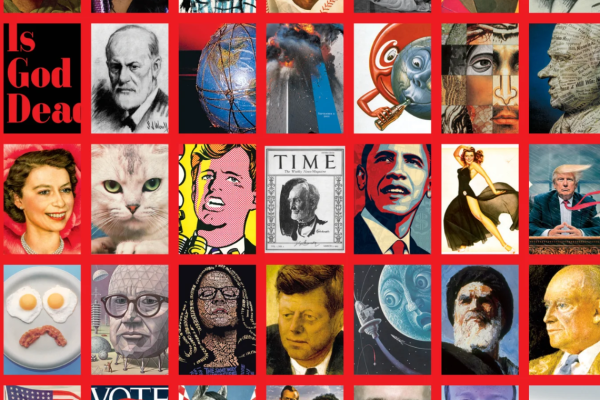Time magazine, defining the century
How should Time magazine celebrate its 100th birthday? Big Bird has the answer…
One hundred years. That’s how long Time magazine, known for its iconic covers and incisive commentary, has been gracing the newsstand shelves. To say it’s a classic is almost an understatement considering the publication’s enduring relevance amidst the noise of modern media.
Five years ago, for the brand’s 95th birthday, FIPP interviewed DW Pine, Creative Director at Time responsible for (at that time) over 500 covers. He said of Time’s continued appeal: “What I’ve always loved about Time is our authority to cover a wide range of topics – from health to politics; business to sports; science to world news – and our readers expect that coverage from us.”

Within the current climate of distrust in the media, fake news and clickbait, being a beacon of authority is an admirable – and enviable – position to be in. So what has established Time as a touchstone for quality journalism?
Unsurprisingly for a magazine that has covered a century’s worth of world events, Time has borne witness to pivotal moments in our collective history. From the Dalai Lama’s 1959 cover to Martin Luther King Jr. at the height of the civil rights movement, from Laverne Cox on “the transgender tipping point” to Mary Cronin’s interview with Sesame Street’s Oscar the Grouch, the magazine has tackled society-changing topics through the lens of the century’s most influential people in a way many of us media folks can only dream of. And yes, I’m counting Oscar the Grouch as an influential person.
Like many newly launched magazines, the first issue came together through hard graft and long hours from a highly committed group of people. “Henry Luce and Briton Hadden and their scrappy team of 20-somethings piled into a cab to barrel across town to the printing plant on the last Tuesday in February 1923,” says Nancy Gibbs, Editor-in-Chief from 2013 to 2017, and currently Editor at Large. “There they spent the final hours cutting, pasting, and fine-tuning the first issue of the magazine that would come to define the American Century.”
Its humble beginnings now belie its ground-breaking impact. As Gibbs, also the Edward R. Murrow Professor of Practice of Press, Politics and Public Policy at Harvard, stated: “No such thing had existed before – no such artful, even arrogant, arrangement of all the world’s news into tidy categories. [It was] designed for an age of information overload, to be read in an hour.” The fact that we are in an age of more extensive ‘information overload’ is remarkable in itself, but perhaps more remarkable is the publication’s continued ability to keep pace while staying true to its initial premise.
Part of Time’s success is its focus on people; it has had a person on every cover since the 1960s, and its Person of the Year is a key moment in the annual media calendar. But when named ‘Man of the Year’ in 1963, Martin Luther King Jr. encapsulated the deeper significance of using a face to tell the news.
In a letter to Time co-founder Henry Luce the following year, King explained that the designation meant as much to the Civil Rights movement as to him. “This is indeed an honor not to be coveted by me personally, but rather one to be shared by the millions of courageous people who have been caught up in the gallant spirit of the entire freedom movement.”
Fifty years later, the fight for trans civil rights was spotlighted with a Laverne Cox cover. Having found critical acclaim for her performance in Orange is the New Black – for which she was nominated for a Primetime Emmy – the transgender actress saw the opportunity as a way to start vital, potentially life-saving conversations.

“When the Time cover came along, it was in the context of me trying to use this moment to mean something,” she told Time this year. “It wasn’t about me – it was about my community.”
With a worldwide circulation of 1.6 million and an Instagram following of 12.1 million, Time is better placed than most to engender community. And that is no mean feat in what D.W. Pine described as, “an extraordinarily complex world with few simple answers.”
Five years after that interview, not much has changed – including Time’s ability to cut to the bone of the matter. Naming Volodymyr Zelensky Person of the Year 2022 both honoured his leadership during the Ukraine war, and highlighted what matters; to quote Time, that “courage is contagious”.
And when it comes to celebrating the centenary, Big Bird has an idea that’s simplicity itself.

In an interview with Time – over 30 years since he broke numerous hearts singing ‘It’s Not Easy Being Green’ at Jim Henson’s funeral – Big Bird was asked how Time should acknowledge its 100th birthday. His touching answer? “You’re going to need a REALLY big cake for all of those candles. Maybe you could invite all your friends to come share.”
Time turned 100 on March 3rd, 2023. As part of the year-long celebration of its centennial, on Feb 28th Time released a new multi-platform editorial project and a commemorative cover to celebrate both the enduring power of Time’s iconic red border and its exploration of the voices, ideas, and innovations that will drive global progress for the future.



![[New!] FIPP Global AI in Media Tracker – November 2025](https://www.fipp.com/wp-content/uploads/2025/06/articles-header-800x760.png)





